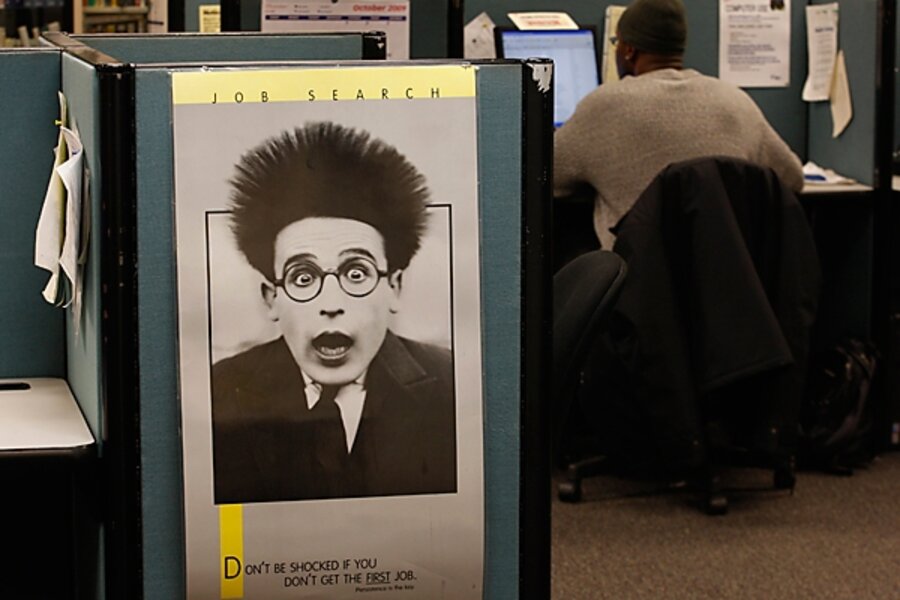Consumer spending, job numbers indicate uneven recovery
Loading...
| New York
A raft of economic data released on Thursday shows an economy that is continuing to improve from a recession to a modest, perhaps uneven, recovery.
The US consumer appears to be spending more money, but mainly in response to inducements, such as the now-ended "Cash for Clunkers" program. Business is starting to expand, but not at a pace that means workers are being hired. And the housing sector, a drag on the economy for more than three years, is finally adding to growth.
“The economy is clearly in a recovery, but it faces lots of problems,” says Lyle Gramley, a Washington-based economist and former Federal Reserve governor. “We are not at all soaring like an eagle.”
The numbers for consumer spending in August illustrate the challenges for the economy. Although spending increased by 1.3 percent, almost a third of the increase was attributable to hyped-up auto sales from the cash-for-clunkers program. It’s likely that consumers who would have purchased cars this fall bought them instead in August, economists say.
Although consumers did make some non-auto purchases, they are beset by low wage growth and tighter credit standards. In the August numbers, personal income rose by a modest 0.2 percent. That increase was probably aided by a hike in the minimum wage.
“It’s a mixed bag for the consumer,” says John Canally, an economist at LPL Financial in Boston. “But I think they will muddle through and do what they can for the recovery.”
It’s not unusual at this point in an economic recovery to get mixed signals, Mr. Canally says. “It’s never a straight line up and never a straight line down,” he says.
The jobs picture is also mixed. For the week ending Sept. 26, initial claims for unemployment rose 17,000 to 551,000, the Labor Department reported Thursday. Prior to this, claims had declined for several weeks, which meant that the four-week average fell slightly.
“Clearly, employment is not taking part in the recovery,” says economist Sung Won Sohn of California State University, Channel Islands. “Many small businesses are putting plans to expand and hire on the shelf primarily because of the enormous uncertainties facing them.”
On Friday, the Department of Labor will report the September unemployment rate, which is expected to rise slightly. The number of jobs gained or lost will also be stated.
“Hiring has not begun yet, but we are close to the end of layoffs,” Canally says.
On Thursday, Challenger, Gray & Christmas, a Chicago outplacement firm, announced that job cuts came to 66,404 in September – the lowest level since March 2008. It was the fourth consecutive month that job cuts were lower than they were a year prior.
Although companies may be cutting fewer jobs, they are still not overly confident. On Thursday, the Institute for Supply Management (ISM) reported that its manufacturing index in September was slightly less favorable than it was in August. But ISM also said that manufacturers are experiencing some growth – again, an uneven signal.
“Capital spending and business spending typically do lead out of a recession,” Canally says. “The numbers were a little weaker than expected, but not any disaster.”
As for construction spending, it rose 0.8 percent in August, the Commerce Department reported Thursday. That number was a better-than-expected showing. Construction of single-family homes rose 4.5 percent, according to the report.
“The housing market clearly is making a recovery,” says economist Richard DeKaser of Woodley Park Research in Washington.
-----
Why did Saturn fail?
Penske's bid to buy Saturn from GM fell apart Thursday, ending a grand experiment in American automaking. Click here to read more.
-----
Follow us on Twitter.






